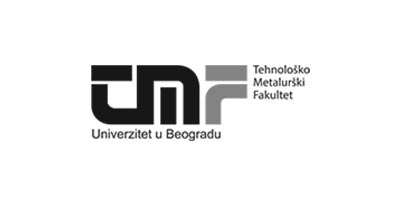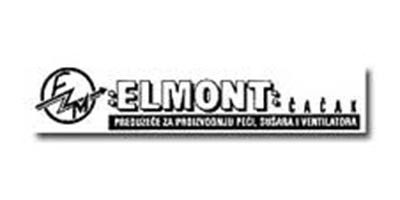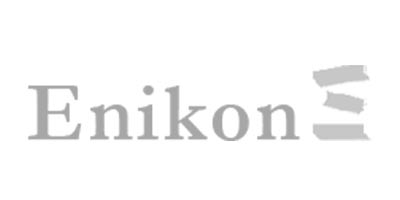Distribution of pollutants within the Zajača area
Main Geological Map 1:100000 List of Zvornik, L34-123 shows anomalies of Pb, Zn and Sb in carbon clay shales and quartz sandstones; triassic sediments -quartz conglomerates, breccia and sandstones and layered and banked oolitic limestones and sandstones, miocenic dacito-andesites and piroclasts dacito-andesites. The anomalies of As are not shown on the map, but the arsenic is often found together with antimony when dealing with low-temperature hydrothermal deposits.
Carbon and triassic formations are not source of Pb, Zn, Sb and As. The above-mentioned metals are deposited in upper-carbonic limestones during miocenic volcanism, to be more precise, the deposits of Sb with associating As (Pb and other metals) are created by post volcanic hydrothermal processes the deposits with SB with corresponding As (Pb and other), such as the Zajača system.
During this process, the increased concentrations of metal developed naturally on the surface (geochemical anomalies).
According to Janković in 1990, the development of mining ores is connected with carbonic, perm and triassic formations of the soil, together with dacito-andesitic volcanic rocks and their pyroclastic equivalents. The major source of mining ores in this region are upper carbonic limestones, due to most favorable conditions for development of the antimony ore. The richest deposit of antimony ore (regarding Zajača area) is located on the rim of dacito-andesitic massive, more precisely, on the contact of dacito-andesitic and carbonate rocks. During abrupt cooling of excreted melted rocks, due to contact with cold original rock, (grey limestones of Upper Carbone), the vein deposits of Sb are formed, where these occurrences are found in the highest concentrations.
Local deposits of antimony are noticed in the Zajača area, in significantly smaller quantities, in shales and dacito-andesites. Ore-bearing limestones are folded and divided into blocks and on the contact of dacito-andesites and limestones there are developed tectonic breccias where antimony is present in the form of cement. Mineral association is more or less monotonous in this region and composed primarily of antimony oxide-valentinite, stibiconite, senarmontite, then galenite, pyrite, chalcopyrite quartz and calcite.
Prospection of spots of soil and water sampling in the field and analysis of obtained results of the measuring of concentration of soil pollutants from April and May 2019 leads to the conclusion that the highest increased concentrations (T2 -for measurements made in April and T3 for measuring made in May 2019) of Sb, As, Pb and Zn are connected exactly with mentioned vein deposit with highest concentration of ore. Anomalies of mentioned heavy metals exist due to high concentration of ore on this region, but we must not neglect the several decades of exposing of ore of atmospheric influences due to exploitation and storage of tailings.
Concentration of pollutants in soil
Analyses made in April and May 2019, increased concentrations of arsenic and antimony in samples taken in the soil layer up to 60 cm of depth are present. However, after restoration of the landfill further inflow of pollutants to the land and atmosphere was prevented.
Water quality
In order to enable better and clearer insight into the current environmental situation and in order to provide as good and efficient method of restoration as possible, water quality was measured on the said locality. The river Štira flows directly in the vicinity of mines and production complex of Zajača, as well as through the place itself. The river Štira receives six tributaries from the left side on this location, while it receives four tributaries from the rights side. The place of Zajača is supplied with water from local water supply system, taking water from two water sources- older one “Kokići”, yield 4-5 l/s, made by Social Enterprise “Rudnici i topionica Zajača“ during fifties of the last century and more recent one “Turin”, whose yield is also 4-5 l/s, built with the assistance of international donors in 2002.
Because of the high microbiological contamination of water (especially from the water source “Kokići”) and increased contents of heavy metals, as established in 2002 by the analysis of potable water by DOO “Zorka “ “Razvoj i inženjering” Šabac ( No: 92-288 from14/04/2002) the City of Loznica started construction of water piping and connection of Zajača settlement with the city water supply system in Loznica, ensuring supply of healthy potable water for the local population.
With transfer to city water supply line the water sources “Kokići” and “Turin” were no longer used. Sampling of surface waters on the locality ( upflow and downflow) showed increased concentrations of arsenic and antimony. Taking into consideration the geological and tectonic characteristics of the terrain, as well as history of the production process on the locality, we can conclude that increased concentrations of arsenic and antimony in surface waters (the river Štira ) are consequence of the increased concentration of the natural ore forming of As and Sb, as well as exposure of the ore to atmospheric influences during several decades of mining.
High quantities of ores in rock resulted in creation of mining waters. During ore exploitation, the ore minerals were exposed to water and air, resulting in oxidization and creation of sulphuric acids and acidification of water. Thus acidified water (with presence of bacteria) enabled faster process of dissolution of heavy metals from the mining ore; the heavy metals were thus further removed to hypsometrically lower watercourses.



.jpg)

 Contact
Contact









